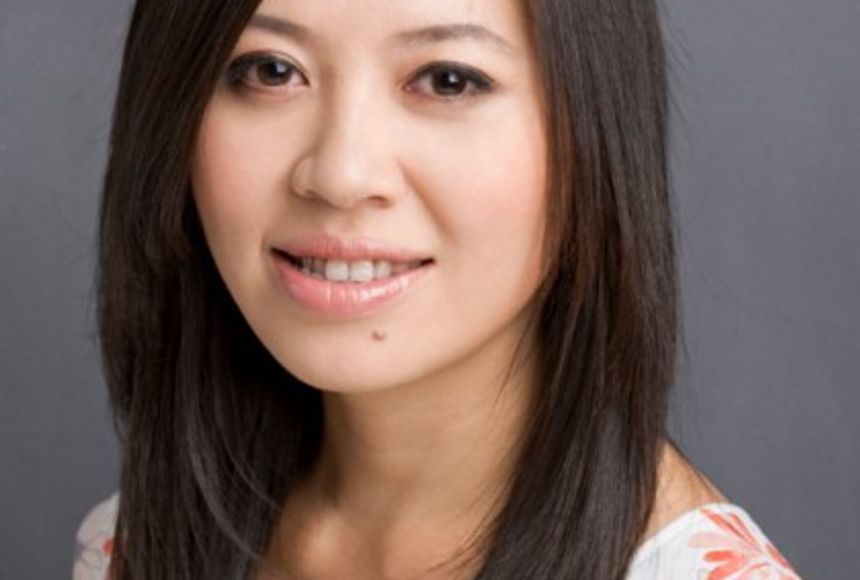Tan Thi Thai Le, a 2013 National Geographic Emerging Explorer, is an innovator and entrepreneur revolutionizing the field of brain science with her company, Emotiv Lifesciences. Tan’s mission entails giving everyday citizens the tools to better understand how their own brains function. Her work is dramatically accelerating the pace of brain research. Her products use electroencephalography (EEG) technology to create a uniquely user-friendly method of collecting and sharing brain data.
EARLY WORK
Tan began her career as a lawyer. Through that job, she was inspired to switch gears and get into entrepreneurship. “What’s really transforming our world today is technology. Technology is driving a lot of innovation and driving what’s happening in everyday lives. As a lawyer, I was facilitating and sitting on the sidelines helping entrepreneurs and other creative people undertake their ventures. I wanted to be a part of it too.”
The second shift in Tan’s career came roughly five years after the founding of her first company, when she became “unhappy thinking about reinventing [herself] every three to five years.” That’s when the intrigue of the brain and the opportunities to expand the norms of brain research caught her attention and kept it. “The brain slowly became more and more of a fixture. This was something that I was totally fascinated by. . . . I saw opportunities to disrupt this space by really innovating around a core technology. The dream was to try to create a technological platform that would make it much more accessible for anybody who is interested in the brain to participate.”
MOST EXCITING PART OF YOUR WORK
Tan says she and her colleagues at Emotiv Lifesciences are simply the creators of the technology. The beauty, she emphasizes, is in the applications. “We’ve been really amazed by how the technology has been used. . . . People have looked into driving a car with your thought, using a smartphone via thought, new methods of patient rehabilitation, children’s art, and so many different things. We’re the people who created the technology platform, but not the applications. It’s developers and researchers who have taken this technology platform and breathed life into it.”
MOST DEMANDING PART OF YOUR WORK
Brain research is traditionally dominated by a small number of experts, with decades of education and experience required to break into the field. For Tan, convincing those around her to reframe their approach to understanding and researching the brain was no small task. “There’s something that’s very limiting when you become an insider or an expert, because you become settled and you come to expect certain things. People say, ‘It’s always been done that way.’ But let’s think again—why does it have to be this way? We fall into autopilot even when we’re trying our hardest not to fall into this trap.” Since moving past this initial hurdle and assembling her “multidisciplinary team of misfits,” Tan’s challenges have taken on a much more technical nature, tied to the mechanical and engineering intricacies of Emotiv’s different products.
HOW DO YOU DEFINE GEOGRAPHY?
“It’s really any uncharted territory. If you think of geography as territory, then what we’re trying to do with geography is explore all of the uncharted territory. Whether it’s the brain or other fields where we don’t have all the knowledge.”
GEO-CONNECTION
If the root of geography and exploration is the desire to better understand the unknown, the brain may indeed be the ultimate challenge for explorers like Tan. We know less about the brain than we do about any other system in the human body. “It’s a challenging problem, especially because the brain is a system that’s very dynamic. We understand now that the brain has neuroplasticity, which means that the brain doesn’t stop learning once the critical period closes. It remains open for the bulk of our mature adult lives. That means that it’s constantly evolving in response to the input you’re providing it.”
SO, YOU WANT TO BE AN . . . INNOVATOR AND ENTREPRENEUR
Innovation, Tan says, is best understood by looking at the common forces moving society and technology forward. “The best way to predict the future is to invent it, but short of that, the next best thing is to look at people’s collective passions, because that’s really what’s driving the world today.” Tan cites coding—the suite of “languages” computer systems use to communicate—as an essential tool for tapping these collective passions. “If I had the chance again, I would definitely learn to code. It’s a very useful language to have under your belt; I consider it a communication tool. . . . It equips you with a set of tools that you can apply to anything.”
